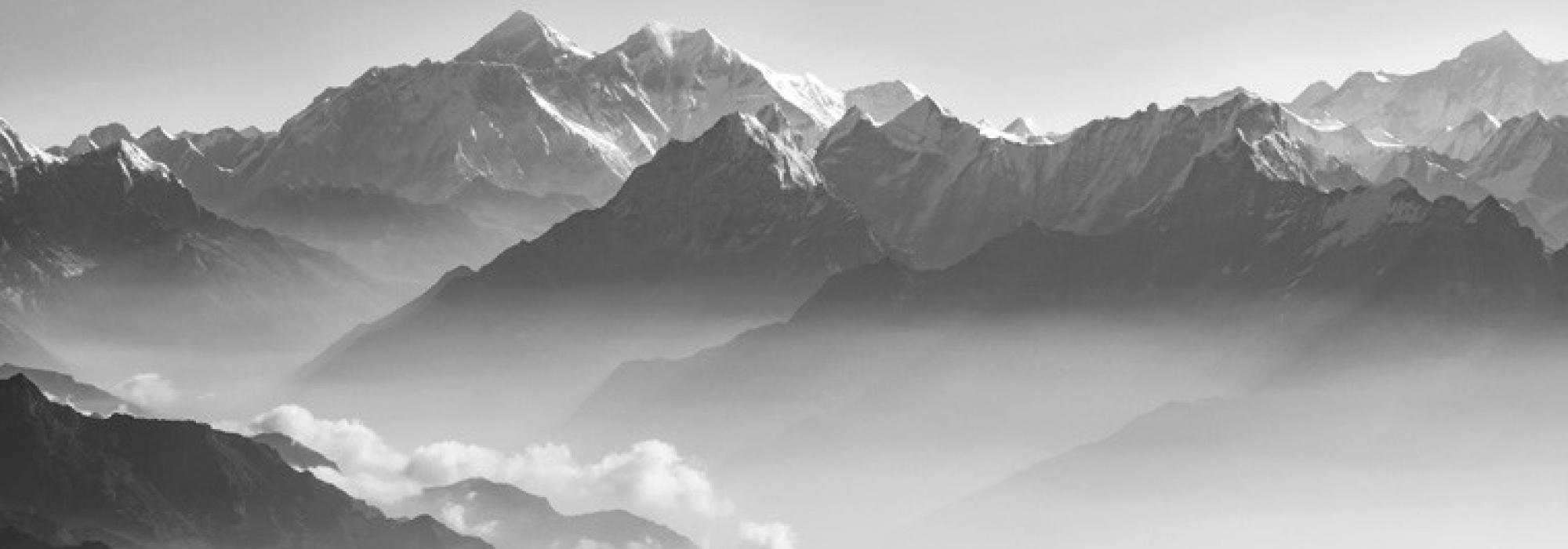Introduction
ekam-evādvayam-arūpaṃ brahmam-avyayam-akriyaṃ
svīkarisi nijabhogakèṃdu śarīra-vividha-sahasramaṃ ।
prākṛtāsvādyagaḻa madhuviṃ tannane tāṃ maretavol
lokajīvana-sīṃdhu-vīciyoḻ ātmadī ḍolotsavaṃ ॥
Brahma is the One, without a second, formless, changeless and without action
Takes, a myriad varied forms, for its own pleasure
Seems as if it is lost in worldly pleasantness
This is the surf-fest of the ātma in the waves of the ocean of worldly life.
Note
para-caitanyaṃ prakṛtī-
śvara-saṃyogadali paridu baralidu viśvaṃ ॥
pari-ciṃtyagaḻī tanuvi-
staragaḻum akhilādi sattvamuṃ pratyaṃśaṃ ॥
When the supreme energy flows out of the union
Of prakṛti and Īśvara, the universe manifests itself.
All aspects of all forms in the universe with their alities
Are to be thought of as its multifarious expressions.
Summary
Bhagavān Śrīkṛṣṇa’s instruction is chiefly about the method of gaining knowledge; about the greatest philosophy that is the object of gaining knowledge, and the discernment to distinguish between dharma and adharma that results from knowledge. All the works of the universe are due to the interaction between prakṛti (Nature) and puruṣa (the sentient being). Since these transactions are infinite, the variety and uniqueness we find in various forms of life and other things in the universe are also infinite. The method of realizing the single entity that is inside all this variety, the basis of everything, is explained in the Gītā.
Prakṛti is the field where the plant of saṃsāra grows. Ātmā is the farmer. The energy of the ātmā is of the form of true knowledge, and is always equanimous. Because it is equanimous, the knower of the field (lit. kṣetrajña) perceives his field and also other fields and farmers. Paramātmā is the energy, the thread that binds and holds together the various aspects of the universe. Bhagavān describes kṣetra as a constituent of prakṛti, and explains qualities such as humility and straightforwardness that have to be practised by those who want to realize the principle of the ātmā (ātmatattva).
Some realize the nature of māyā with their intellect and make their lives fruitful. Some others practise dhyāna and realize paramātmā from that. Yet others learn the splendour that is the ātmā from others, worship that and obtain fulfilment. Worship is of paramount importance — as it grows, divine experience comes along.
Māyā is the wall raised by prakṛti between jīva and paramātmā. It comprises bricks that are the guṇa-triad. For those who want to understand the nature of the ātmā, it is necessary to understand the three guṇas.
Section 14 / Chapter 13 Kṣetra-Kṣetrajña-Yoga / Prakṛti-Puruṣa-Yoga
(The Yoga of Nature and the Primeval being)
Exposition of knowledge starts in this chapter of the Gītā. The eighteen chapters of the Gītā can be divided as three ṣaṭkas — Karmaṣaṭka, Bhaktiṣaṭka and Jñānaṣaṭka respectively. A ṣaṭka is an aggregate of six chapters — a hexade. In a hexade, the respective topic is the principal topic, whereas an allusion to the other two is incidental. Looking at this in its entirety, karma, bhakti and jñāna are like the three stones of a stove, all of them to be used together. Even though they appear as three separate entities, they work together in unison. The three can be considered separately only for the sake of intellectual understanding, not for practice and experience. Thus, the portion of the Gītā from the thirteenth to the eighteenth chapter helps in understanding the true nature of Brahma.
The principal topic of the present chapter is jñāna or knowledge. What is jñāna? It is a work of the intellect. If an animal recognizes another animal or thing that is different from it, that is jñāna. There are two important strengths within us — one is the manas and the other is the buddhi. The manas experiences deficiency or desire or pain, just as feeling happiness, pleasure, love and hatred is its job. Based on the reports submitted by the eyes, ears and other sense organs, the manas experiences want and insufficiency, and satisfaction and happiness. The buddhi then evaluates and informs about the nature and worth of the information thus gathered thus by the manas through the sense organs and its memory. The manas and buddhi are not completely different. They are like the two different sides of a single sheet of paper. It is merely shastric terminology to recognize the action of one side as feeling and classify it as that of the manas, and recognize that on the other side as that of the buddhi and call it jñāna. Even though feeling and knowledge are one and the same at the etymological level, their common usage is slightly different.
It is the work of manas when a baby cries of hunger. It is the work of the buddhi when it stops crying on seeing its mother approaching, thinking that she might be bringing milk. It is the work of the manas when a mother grieves over her child’s illness. Then it is the work of the buddhi that sends the father to the doctor and gets medicine. The manas made Duśyanta fall hopelessly in love with Śakuntalā and wail to no end. Later, when she complained that a bee from the garden was trying to hurt her, it was his buddhi that made him rush forward on this pretext, bragging thus about his heroism — “who can trouble the poor girl when I am here?”
Buddhi arranges information gathered by the manas about things and provides them for action. During this process, it deliberates upon their nature and inherent disposition, and what they can be used for. The result of this deliberation is jñāna.
Bhakti is mainly a work of the manas. Jñāna is mainly a work of the buddhi. Karma is a bodily work that is directed by both manas and buddhi.
Let us now go to the text. In the beginning of the Gītā itself, Bhagavān has noted the following —
dehī nityam avadhyo’yaṃ dehe sarvasya bhārata
BG 2.20
There is a body (deha), and there is a dehī (the ātmā that resides in the body) that rules over it and is separate from it. The body undergoes change and eventual destruction, but the dehī — ātmā is unchangeable and eternal.
Since Parabrahma is extremely subtle and cannot be described by mere words, Bhagavān has placed pointers to its nature within seemingly contradictory sentences. Only by examining the sentences again and again can we discern the underlying meaning hidden between these lines.
anādimat paraṃ brahma na sat tan-nāsad-ucyate ||
BG 13.13
“Parabrahma is without beginning, and is said to be both existing and not existing”.
Here, the first part anādimat paraṃ brahma can also be split as “anādi+matparaṃ+brahma”. Then, we can read the meaning as “Brahma is that which is without beginning, and which is above my present birth of Kṛṣṇāvatāra, which has a beginning”.
The second part is more difficult to understand. It has the following words —
na + sat + tat + na + asat (ucyate). The meaning is as below:
tat = that Brahma
na sat = appears as though it does not exist — that is, it is not directly perceptible but has to be inferred. It lies hidden under the blanket woven by prakṛti, that is the universe. This blanket that we see undergoes change and destruction. Therefore it is asat. The ‘sadvastu’ Brahma lies hidden in the ‘asat’ universe, and imparts a feeling that it is not there. Therefore, “na sat”.
“Na asat” = In reality, it is not something that does not exist. It is present at all times in all places. Even if it is not seen, it is not something that does not exist.
In “na sat tat” , ‘sat’ is something that can be discerned by the senses.
Brahma does not exist from the point of view of the sense organs. The same opinion is espoused by the śruti also —
asadvā idam agra āsīt । tato vai sat ajāyata ॥
Tait. Up. 7.1
“Indeed, didn’t asat verily exist in the beginning? Sat was born from it”
From the verb “āsīt”, it is clear that there was something. But it was not possible to be known or understood. It was without a form, gender and other physical properties. What existed in the beginning was not vacuum, but something that was not perceptible by eyes and ears. Since it could not be seen physically, it was called asat. Asat means imperceptible. Something that exists but does not show itself, is avyakta. That is asat. Here, “asat” does not mean complete nonexistence, but nonexistence from the point of view of perceptibility. It is the nonexistence that is inferred about the beginning of time, from the point of view of after the universe came into existence.
To be continued...
The present series is a modern English translation of DVG’s Kendra Sahitya Akademi Award-winning work, Bhagavad-gītā-tātparya or Jīvana-dharma-yoga. The translators wish to express their thanks to Śatāvadhāni R Ganesh for his valuable feedback and to Hari Ravikumar for his astute edits.















































